Erin McFadyen reviews “Newcastle Sonnets” by Keri Glastonbury
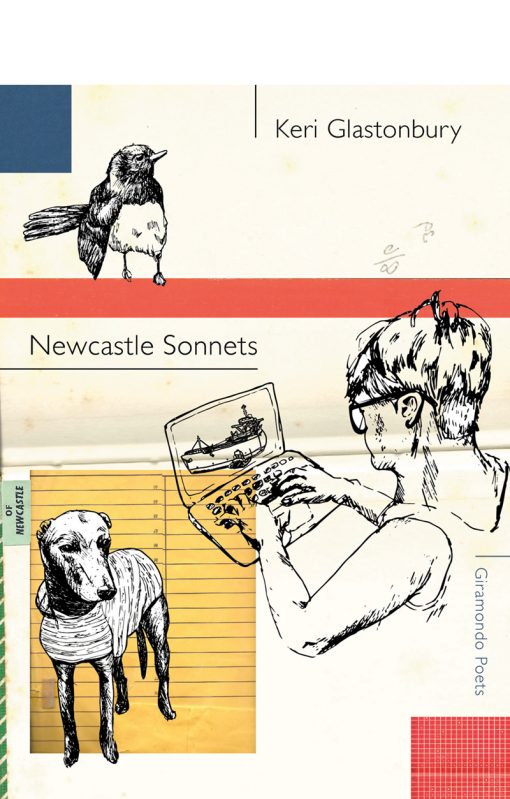 Newcastle Sonnets
Newcastle Sonnets
By Keri Glastonbury
Giramondo
ISBN 978-1-925336-89-4
Reviewed by ERIN MCFADYEN
Keri Glastonbury’s Newcastle Sonnets are at their most mimetic when firing off their dazzling one-liners. The collection is interested in the processes of de- and re-composition that make up, continually, the post-industrial suburbanscape of Newcastle. Taking the city as a kind of monkey-bars apparatus for throwing together and for tumbling apart, the Sonnets treat language the same way as the landscape. They revel in the (re)generative potential of double-meanings, puns, and hyper-specific referentiality, but also, in the end, searing take-downs of local teens and late capitalism alike, delivered with a glimmer to the gut.
The weirdly quick, mercurial march of gentrification is right at the centre of Glastonbury’s target. There’s certainly a pleasure in the poet’s sharp wit, if not an entirely easy one for readers complicit in enjoying her knowing ivory tower in-jokes. Glastonbury might, for example, follow the humour of recognition, in passages like
There are still flashers at bus stops
but now the grapevine is virtual
& kids have Fjällräven Kanken backpacks
in candy colours
with wonderful pastiche puns:
The unbearable lightness
of rail (34)
These lightnesses, slightly unbearable though our delight in them may be, are fast hits of readerly reward. Often several times over in each sonnet, we’re given viscerally indulgent lines like ‘What is Batman’s guilty pleasure? / Clive Palmer’s soft, shitty body,’ (35) or ‘the thick oatmeal / of Sandliands’ face’ (8). We can smile, satisfied, at jokes overlaying the literary and the local — ‘Tess of the Erskinevilles’ (7) — and at speculative questioning with one foot in the university and the other in the clouds: ‘what if John Forbes had lived / to live tweet during Q&A?’ (6).
These moments offer us something like shining hard lollies of poetry, sugar hits immediately delicious on the tongue. It’s tempting to suggest that they puncture, redirect, or interrupt what Glastonbury elsewhere describes as a Novocastrian ‘ambient attention’ (4). We can consider that they give us all of our reward at once, a high-energy hit; the laugh, the immediate vision of reference points coming together. Conversely, we can also think of them as spilling our attention outwards, simultaneously in all the directions of the poet’s many gestures: across landscapes, across literary history, across registers and experiences both haptic and intellectual. In both ways, these joyfully — and, yet, not uncritically — hilarious poems lean into the kind of attention deficit that Glastonbury describes in ‘2 Hours South’:
A farrago of ways to be jealous, ways to be vicarious
ways to suffer, swiped away like old screens (71).
And, yet, to pin these poems as insufficiently attentive would be misrepresentative. Indeed, there’s a way in which they’re exactly the opposite; Glastonbury’s investment in the particularities of the ‘little big smoke’ of Newcastle signals a poet invested in deep attentiveness. Indeed, Glastonbury is critical of views of regional life which deal in broad strokes, in cliché, or in snobbish selectivity. In ‘The White Bird,’ for example, she’s unimpressed that
The metropolitan critic comes to town
& goes only to the regional gallery
— a poetry of complaint, misses the authenticity
of the drying paint. The blacks,
the Prussian Blues (72).
There is certainly a will to recenter the regional in this attitude and in the poems which enact it, positioning Newcastle the minor metropole not simply as secondary or merely aspirational, but as real and affecting and deserving of references that Melbournians might have to Google to get.
Attentiveness to these kinds of details, these minutiae, might be a kind of love. This would be fitting, perhaps, given the nominally generic form of the pieces here — I mean, given that these poems refer to a history of, and are, sonnets. The most obvious point of reference here might be Ted Berrigan’s The Sonnets, which Glastonbury mines and mimes in poems like ‘Just Quietly Babe.’ Glastonbury’s opening line here — ‘Dear Hamish, hello. It is 5.15am. / Guess we’re more West Coast…’ (29)— walks behind the eminently East Coast Berrigan, whose second sonnet begins ‘Dear Margie, hello. It is 5:15 a.m’ [1]. Equally explicit, though less exegetical, is Glastonbury’s gesture to Shakespeare in ‘The Pink Flamingo (of Trespass).’ In this instance, ‘the Tromp family’s psychedelic road trip / unfolds like a Netflix folie a deux / as Shakespeare’s Sonnet 127 is read in Noongar’ (67). Sonnet 127 is the first of Shakespeare’s ‘Dark Lady’ sequence. Here, double meanings help to figure an ostensibly unconventional object of love:
In the old age black was not counted fair,
Or if it were, it bore not beauty’s name;
But now is black beauty’s successive heir,
And beauty is slandered with a bastard shame:
For since each hand hath put on Nature’s power,
Fairing the foul with Art’s false borrowed face,
Sweet beauty hath no name, no holy bower,
But is profaned, if not lives in disgrace.
Therefore my mistress’ eyes are raven black,
Her eyes so suited, and they mourners seem
At such who, not born fair, no beauty lack,
Sland’ring creation with a false esteem:
Yet so they mourn becoming of their woe,
That every tongue says beauty should look so. [2]
If ‘beauty’ comes apart from ‘fairness,’ (as in lightness) here, and attaches itself instead to the raven black of the apostrophised woman’s eyes, ‘fairness’ becomes a truly polyvalent term. Both beautiful and opposed to beauty — because it is the opposite of darkness — fairness’s ambivalence is its foundational feature.
Glastonbury’s gesture to doubleness fits her approach to the sonnet form itself. Even with her clear references to the sonnet in its various historical guises, she’s interested in challenging precisely what this form can do, and what it can reasonably ask poets to do. We might configure her use of the form using Berrigan’s phrase, imagining these works as ‘Poem(s) in the Modern Manner’ [3]. The poems in Newcastle Sonnets are 14 lines long, getting us over the line for formally recognisable Elizabethan sonnets, but rhythmically and in rhyme (as well as in geography, in topography, in politics) we are a long way from London. Her treatment of the sonnet shortens and stretches out the lines, swings the rhythm. So considered, Glastonbury can be seen as, at times, crafting an exposed-brick iteration of this historical form, drawing attention to its structural foundations if only to ironically distance herself, and the aesthetic she ends up with, from them. In this, she makes the sonnet something exciting and relevant for the kinds of readers she might teach in her ‘cushy lecturing job in a regional town’ at the University of Newcastle:
…an anthroposcenester, the full cast
of Girls in every class, like every town
has a Kurt Cobain… (77)
Yet, exposed brick doesn’t always signal the fresh, the new, or the thrilling for Glastonbury, who also sees ‘the pebblecrete poles of the East End / speaking to an historicist melancholy’ (11). Indeed, in ‘The Sea Folding of Harri Jones,’ Glastonbury pictures stone not so much as reconstruction, but as ruin:
Someone’s doing parkour on the military ruins,
no one is washing up in Shepherds Hill cottage,
the ghost of artist-in-residence past… (56)
Looking back and documenting decay — as well an enacting it formally, in protracted blank space and grammatical cul-de-sacs — is always at the centre, then, of Glastonbury’s vision of the gentrifying city, and the new sonnet that she writes it in. For this reason, I want to offer the possibility of reading Gastonbury’s attention to Newcastle not only as ‘ambient,’ but also as meaningfully ambivalent. These aren’t poems written by a ‘metropolitan critic,’ but nor are they really poems of home. Glastonbury, indeed, has commented publicly on her arrival in Newcastle as an adult, and her dual senses of intrigue and distance from it at this time [4]. Hers are poems which register decay and hold gentrification in contempt, while still revelling in the vibrancy of locality, sparkling with gleefully specific references, in a voice that might almost sound proud. Perhaps Glastonbury formulates her own attitude most aptly: Newcastle Sonnets feels ‘post-celebratory’ (71), deflating the glamour of new money and construction, but also finding reparative feeling in the forgotten corners of a city living in the shadow of its historical self:
From below the bridge the neon reflections could be koi,
everyday rewards glimmering in karmic glissando (41).
Notes
1. Ted Berrigan, ‘II,’ in The Collected Poems of Ted Berrigan, by Alice Notley, with Anselm Berrigan, and Edmund Berrigan (Berkley: University of California Press, 2005), p. 3.
2. Colin Burrow (ed.), The Complete Sonnets and Poems (New York: Oxford University Press, 2002), p. 635
3. Berrigan, ‘Poem in the Modern Manner,’ in Collected Poems, 6.
4. Jim Kellar, ‘Newcastle poet minces no words capturing a city in transition,’ Newcastle Herald, 19 August 2018.
 Turbulence
Turbulence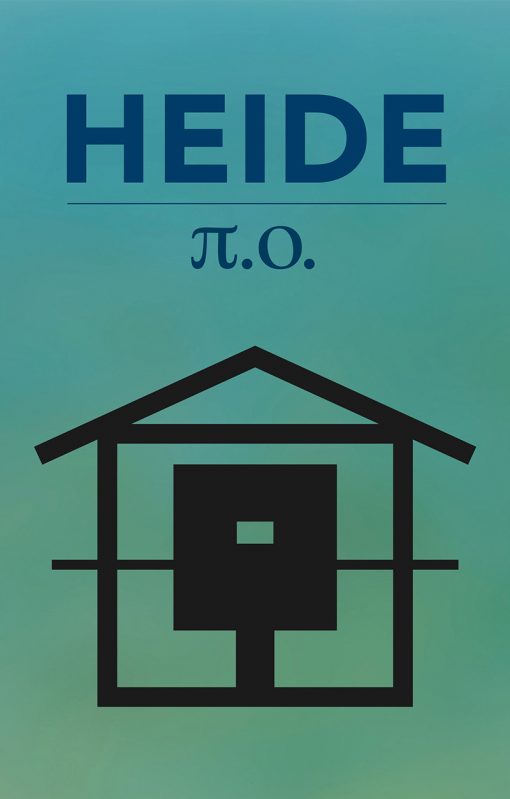 Heide
Heide The Girls
The Girls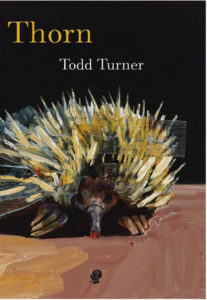 Thorn
Thorn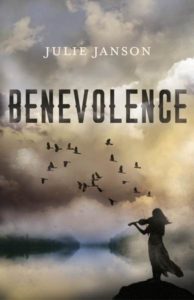 Benevolence
Benevolence Archival Poetics
Archival Poetics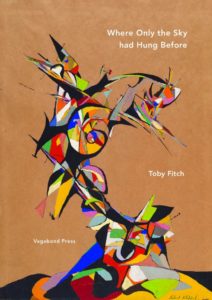 Where Only the Sky had Hung Before
Where Only the Sky had Hung Before Mother of Pearl
Mother of Pearl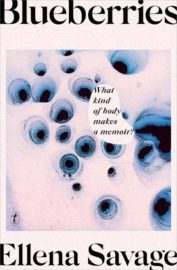 Blueberries
Blueberries